Key takeaways:
- Fabric sampling is crucial for evaluating qualities like weight, stretch, and drape, impacting the overall design and comfort of garments.
- Different fabric sample types, including swatches, sample yardages, and strike-offs, each serve unique purposes in the design process.
- Effective fabric sampling requires organization, testing under various lighting conditions, and wash tests to ensure durability and appropriateness for the intended design.
- Personal experiences with fabric sampling emphasize the emotional connection and inspiration fabrics can evoke, influencing creative decisions.
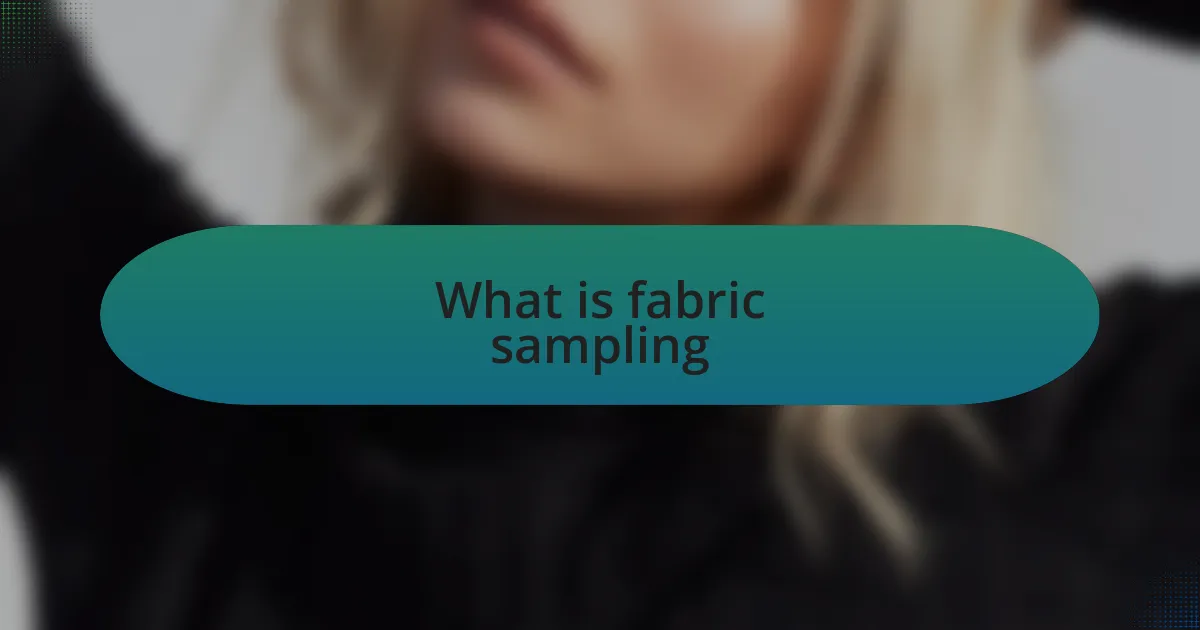
What is fabric sampling
Fabric sampling is the process of selecting and testing different pieces of fabric to determine their suitability for a particular design project. I remember my first experience of fabric sampling vividly. Standing in a brightly lit studio, surrounded by an array of textures and colors, I felt an electrifying sense of possibility. Each sample seemed to whisper its potential story, inviting me to imagine how it might drape, move, and transform in a finished garment.
When I think about the importance of fabric sampling, it’s clear that it’s an essential step in fashion design. By handling various textiles, designers can assess qualities like weight, stretch, and drape – factors that significantly impact the final product. Have you ever felt fabric that just clicked with your vision? That moment when you know it’s the perfect fit is so rewarding!
Ultimately, fabric sampling is not merely about visual appeal; it’s about aligning the tactile experience with the design’s intent. I often tell aspiring designers that the fabric you choose can make or break a piece. That firsthand experience, where a delightful fabric evokes a certain emotion or idea, stays with me and shapes my creative journey.
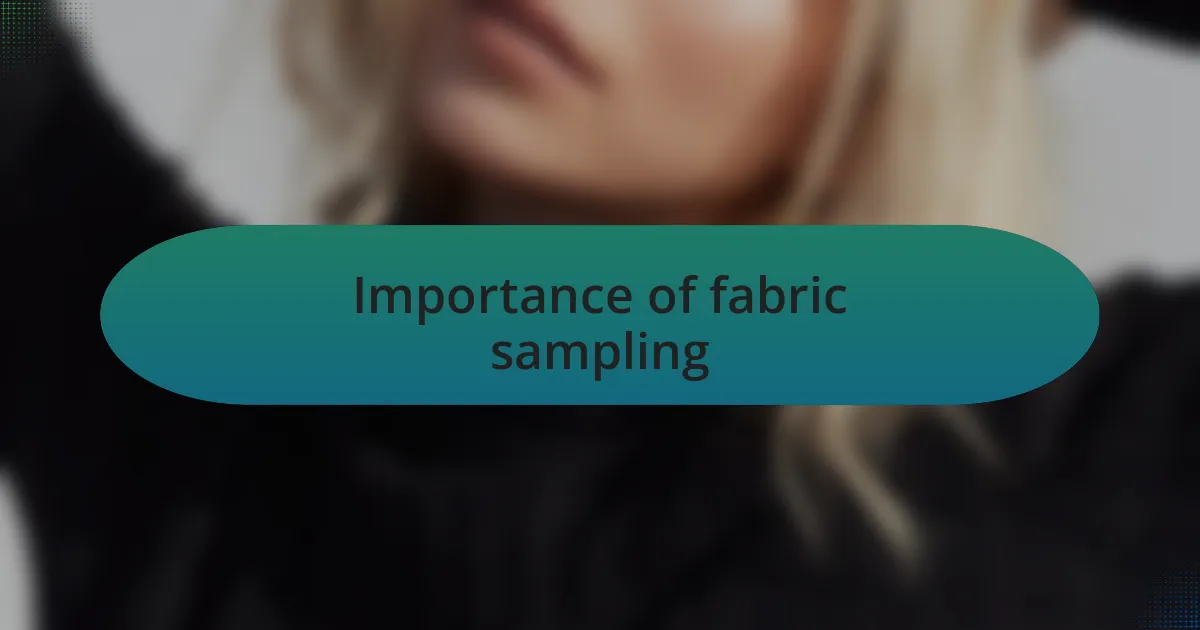
Importance of fabric sampling
When I reflect on my design process, fabric sampling often emerges as a game changer. I once sifted through a pile of samples and stumbled upon a silk that felt like liquid gold in my hands. The moment I draped it over my arm, I could instantly envision a breezy summer dress that would move gracefully in the wind. Isn’t it incredible how one piece of fabric can spark a whole design concept?
Fabric sampling also serves as a crucial testing ground for durability and wearability. I learned this the hard way with a beautiful lace that looked stunning in a design but fell apart after a single wash. That experience reminded me that the visual allure of fabric must be paired with practical considerations. After all, how can we expect customers to love a piece if it doesn’t withstand the test of time?
Moreover, the process reveals the intricate relationship between fabric and fit. I remember fitting a jacket made from a rigid cotton blend; its stifling structure completely altered the silhouette I envisioned. It taught me the irreplaceable role of fabric sampling in ensuring that the final garment resonates with the intended comfort and style. Isn’t it worth investing time in finding that perfect match?
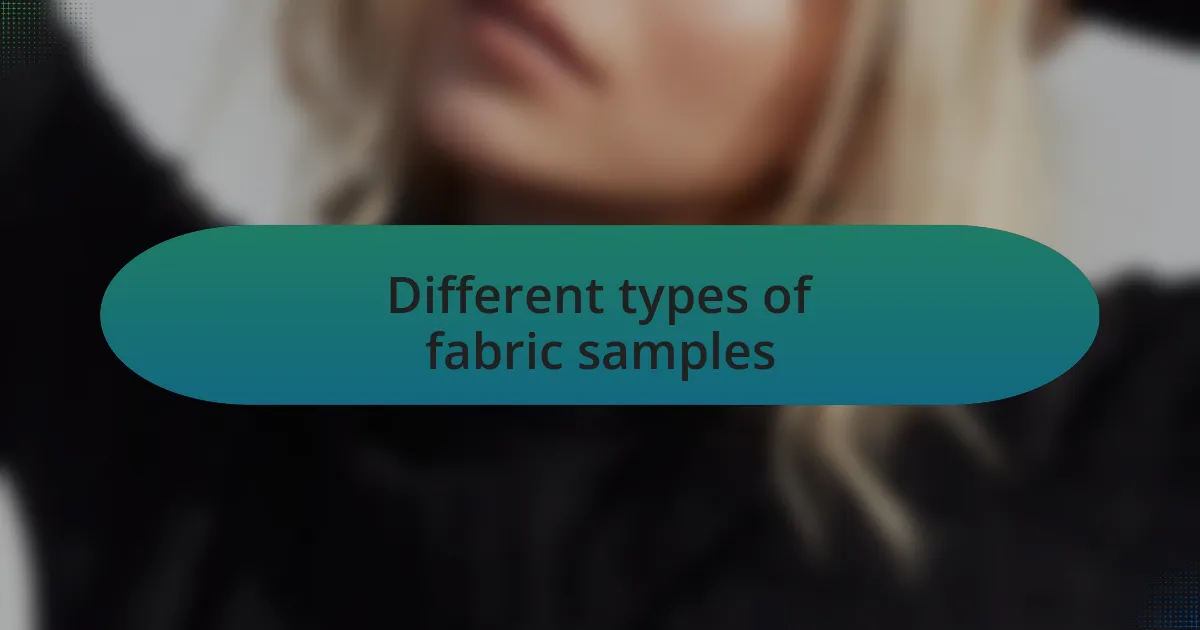
Different types of fabric samples
When it comes to fabric samples, swatches are the most common type, providing a small piece of material that showcases color, texture, and weight. I remember the first time I received a swatch book from a fabric supplier; flipping through those samples felt like browsing a treasure chest. Each little piece told a story, allowing me to visualize how they could be transformed into garments.
Then there are sample yardages, which are larger pieces of fabric that allow designers to experiment with draping and cutting. I distinctly recall using a sample yardage of lightweight linen for a summer collection. As I draped it on my dress form, I felt the fabric’s character come alive—its breathability and flow inspired a relaxed yet chic aesthetic that I knew would resonate with my audience. Isn’t it amazing how the right amount of fabric can breathe life into a concept?
Lastly, there are strike-off samples, which show a printed design on the actual fabric. I had a memorable experience with a client who wanted a custom print for a fashion show. The strike-off arrived, and as soon as I opened the package, I could feel the adrenaline rush. The colors were vibrant and the print sharp, affirming that we were on the right track. It made me realize that seeing the design come to life on fabric is an exhilarating moment for any designer. Don’t you think that those moments of excitement are what fuel our passion for fashion?
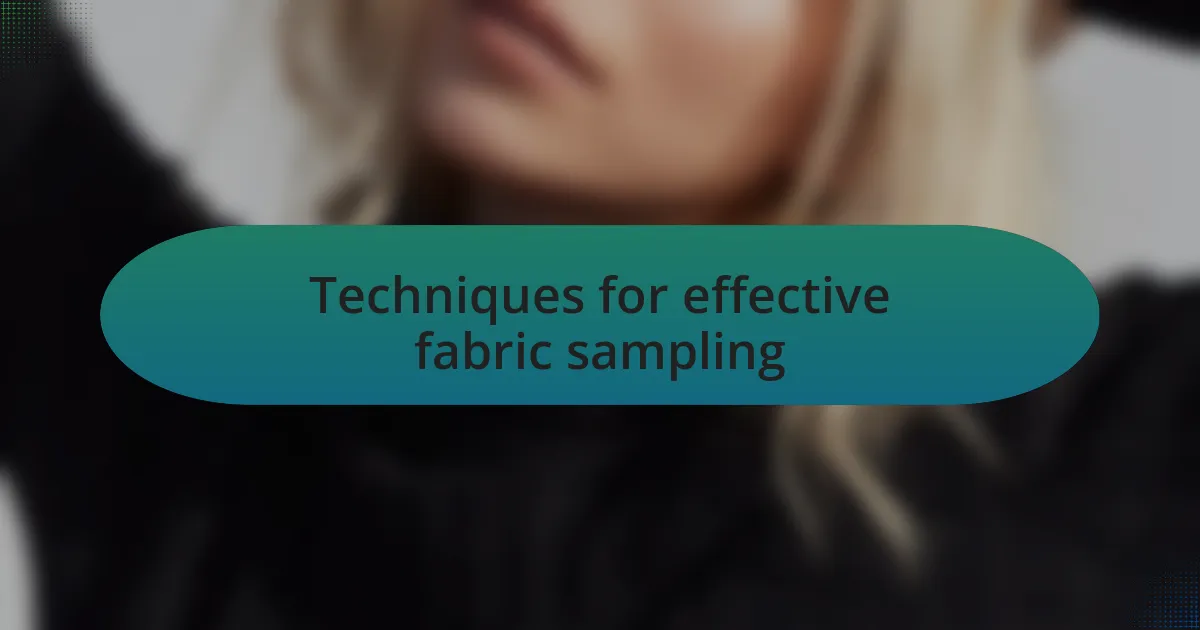
Techniques for effective fabric sampling
When sampling fabrics, organization is key. I always create a dedicated notebook specifically for my fabric samples, where I jot down notes about the properties and potential uses of each material. This method not only keeps me focused but also serves as a valuable reference when I’m in the throes of design, making it easier to recall exactly what I thought about a particular fabric. Have you ever found yourself forgetting why you loved a specific sample? I certainly have, and that’s why clear documentation is essential.
Another technique I find helpful is comparing samples under different lighting conditions. One time, I brought several fabrics outdoors to see how natural light changed their appearance. I was surprised at how a vibrant orange could look muted in artificial lighting but explode with warmth in sunlight. This experience reinforced the importance of considering the environment where the finished garments will be worn. Have you tested fabrics in various light settings? It can really change your perspective!
Lastly, I suggest conducting wash tests on fabric samples to understand their durability and care requirements. Early in my career, I learned this lesson the hard way when a fabric I loved shrank drastically after one wash. You can imagine my disappointment! Now, I make it a point to perform these tests before fully committing to any material. It’s an essential step that saves time and frustration down the line. What techniques do you use to evaluate fabric performance?
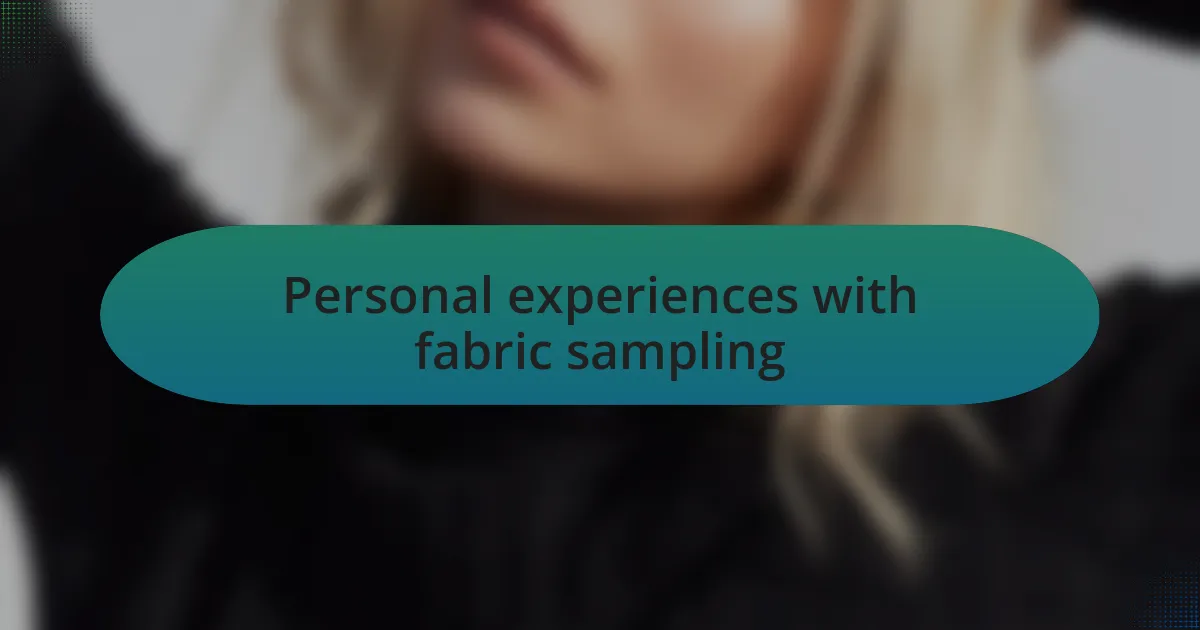
Personal experiences with fabric sampling
When I think about my journey with fabric sampling, one experience stands out vividly. I once ordered a variety of silk samples, nearly overwhelmed by the luxurious textures. However, when they arrived and I touched them, I discovered that some felt too slippery for my intended designs. It was a reminder that the sensory experience of fabric is just as crucial as the visual.
Another memorable moment was during a collaboration where we needed to choose fabrics for a line inspired by nature. I remember laying out all the samples on a large table. As we discussed our options, I noticed how certain fabrics instantly sparked joy and creativity while others dulled the mood. It really highlighted how fabric selection isn’t merely a functional choice; it’s an emotional one as well. Have you ever felt inspired or uninspired just by the swatches before you?
Additionally, there were times when I made the mistake of rushing through the sampling process, thinking I knew exactly what I wanted. I vividly recall an instance where I overlooked the weight of a denim sample. Upon receiving the final product, I realized it was far heavier than I’d anticipated. This experience taught me to slow down and truly engage with each sample before making decisions. Engaging with fabrics thoughtfully has become a priority in my design process since then. Have you had similar moments that changed your approach?

Tips for successful fabric selection
When selecting fabrics, it’s essential to consider how they will perform in your designs. I remember a project where I chose a vibrant cotton blend without thoroughly testing its drape. Once I started sewing, I noticed it didn’t hold the shape I envisioned, leading to a last-minute scramble for alternatives. Have you ever felt the frustration of a project not going as planned because of fabric choices?
Another tip that I can’t stress enough is the importance of visualizing your design as you handle each fabric. During one fabric selection session, I vividly imagined how a soft linen would move in the breeze for a summer collection. As I handled the sample, that visualization guided my decision, reaffirming how crucial it is to see the fabric in your mind’s eye. What fabric choices have inspired you to visualize your next creation?
Lastly, always think about the longevity of your fabric choices. I once fell in love with a stunning sequined textile, only to realize that its intricate detailing would wear poorly over time in active wear. Now, whenever I choose a fabric, I ask myself, “Will this withstand the test of time in both wear and style?” This reflection ensures that I invest in fabrics that not only look beautiful but also serve my designs well in the long run. What practical steps do you take to ensure durability in your selections?